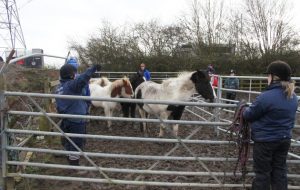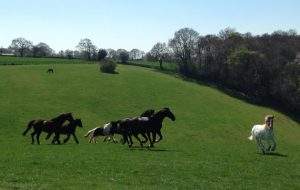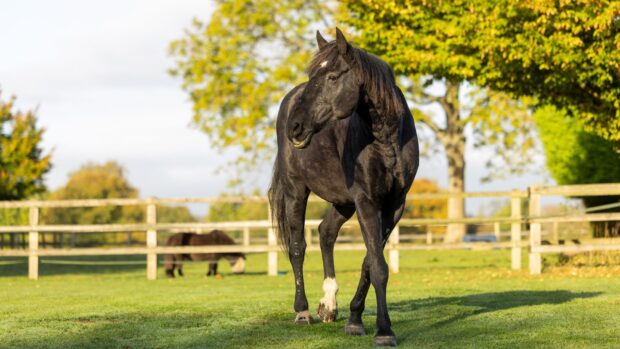Staff at an equine charity are “heartbroken” following the sudden death of a skewbald colt they rescued from squalid conditions six months ago.
Olaf was found when he was six months old with his mother, Elsa, in a field with six other fly-grazed ponies in Leighton Buzzard, Bedfordshire, in January.
Both ponies, who were named after Disney’s Frozen characters when they were rescued, were suffering from severe worm burdens.
 All eight ponies were taken from the site in a joint rescue operation carried out by the RSPCA, World Horse Welfare and the Horse Trust.
All eight ponies were taken from the site in a joint rescue operation carried out by the RSPCA, World Horse Welfare and the Horse Trust.
The 10hh colt was taken with his seven-year-old mother to the Horse Trust’s Princes Risborough centre.
He had been making good progress but suddenly began to deteriorate last month (June).
“He started losing weight very quickly,” Jeanette Allen, chief executive of the Horse Trust, told H&H. “He was being watched very carefully. He had a seizure and went downhill.
“He was sent to the Royal Veterinary College the following morning (16 June) and had another seizure and died naturally.
“It is still unknown what caused his collection of symptoms and ultimately his death as we still await some post mortem test results.”
The charity had not originally planned to take Olaf with his mother since she was so weak and their vet believed she was pregnant.
![Olaf's worms[2]](https://keyassets.timeincuk.net/inspirewp/live/wp-content/uploads/sites/14/2015/07/Olafs-worms2-300x190.jpg) “He was so anxious and clinging to her that it was felt best to bring him with her,” said Jeanette.
“He was so anxious and clinging to her that it was felt best to bring him with her,” said Jeanette.
Both were underweight with body condition scores of 1.5 out of 5 but their biggest problem was internal parasites.
“Three ponies in the same field had died of small redworm infestation and Elsa was so burdened with small redworm it turned out she wasn’t actually pregnant at all,” Jeanette added.
| Related articles |
The ponies were first wormed on 22 January and this showed that Olaf, as well as having a very high small redworm count, also had ascarids (pictured above) and bot fly larvae. It took four rounds of worming to clear their systems.
“Olaf had some terrible blood results for a long time but he was gradually starting to get better results and was emotionally getting better,” said Jeanette.
 “He was running arould with the colts and was getting easy to handle. He was becoming a handsome colt and like he would have a promising future.”
“He was running arould with the colts and was getting easy to handle. He was becoming a handsome colt and like he would have a promising future.”
The charity hopes to see Elsa continue to progress and one day move to a loan home.
The 14hh piebald mare (pictured below) weighed 325kg on arrival and is now 407kg.
![Elsa now[1]](https://keyassets.timeincuk.net/inspirewp/live/wp-content/uploads/sites/14/2015/07/Elsa-now1-187x200.jpg) “This is good progress but her recovery is taking a long time,” added Jeanette.
“This is good progress but her recovery is taking a long time,” added Jeanette.
“Elsa’s long term prognosis is unknown but based on our experience we would hope to see improved blood results over the next year or two. We then hope she will join our rehabilitation programme and eventually find a new loan home.”




